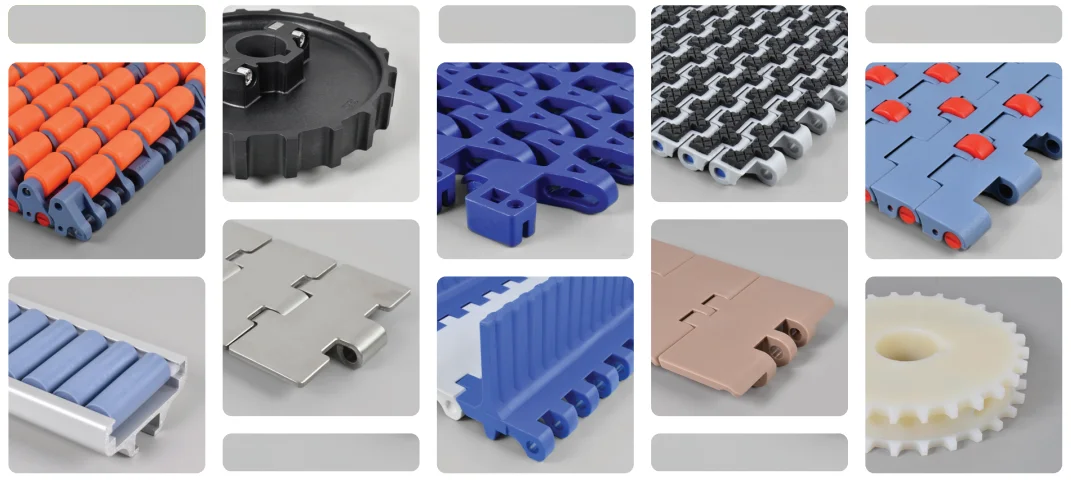Product Description
1. More than10 years manufacture in packing machine
2. 10 years alibaba supplier
3. 100% QC inspection before shipment
4. 12 months warranty
5. Product Certificated by CE
Introduction:
ARLM-160A Automatic Labeling Machine can meet the needs of semi circle labeling, bottle labeling switching between simple, convenient adjustment;
Wide application range: self-adhesive labels, adhesive film, electronic monitoring code, bar code etc..
Application Industry: widely used in food, medicine, cosmetics, daily chemical, electronics, hardware, plastics and other industries.
Application example: PET round bottle labeling, plastic bottle labeling, canned food, etc.
Features:
1. Labeling quality, using standard of spring cover belt, labeling smooth, no wrinkles, improve packaging quality.
2. Flexible application, bottle stand vertical labeling, with automatic sub bottle function, can be stand-alone production, can also be connected to the production line.
3. Intelligent control, automatic photoelectric tracking, with no matter no labeling, no standard automatic calibration and label automatic detection function, prevent leakage and label waste.
4. Simple adjustment, labeling speed, conveying speed, bottle speed can be achieved stepless speed regulation, according to the need to adjust.
5. Durable, using 3 bar adjustment mechanism, make full use of triangular stability, solid durable machine. Made of stainless steel and advanced aluminum alloy, accord with CE Production requirements.
Customized Functions:
1. Can add coding,printing
2. The conveyor can be replaced with a chain plate
3. The width,length,hight can be customize
4. The custom function is applicable to all automatic labeling machines
5. The machine can only be used to sticker labels, can be customized to stick transparent labels, need to change the optical fiber to transparent optical fiber.(Conventional label by induction color; Transparent label by induction thickness)
Note:
This machine is standard machine, can only be used normal round bottles , can not be too soft or bulge.
Can be customized if the bottle has grooves.
Parameter:
| Model | ARLM-160A |
| Power | 550W |
| Filling speed | 10-50PCS/min |
| Filling accuracy | ±1% |
| Bottle diameter | 30-150mm |
| Bottle high | 10-500mm |
| Lable Weight | 20-150mm |
| Lable Hight | 30-160mm |
Q: Are you a factory or a trading company?
A: We are factory manufacturing packaging machines and weprovide perfect OEM and after-sale service.
Q: Can you send me the video to show how the machine works?
A: Certainly, we have made video of every machine and uploaded them to Youtube.
Q: How can I know your machine works well?
A: Before delivery, we shall test the machine working condition for you.
Q: How can I know your machine is designed for my product?
A: You can send us samples of your product and we test it on machine.
Q: How can I pay my order?
A: We accept T/T, L/C paying methods. For those orders less than 500USD, we accept Trade Assurance to pay.
Q: Do you have a CE certificate?
A: For every model of machine, it has a CE certificate.
Your Satisfaction is Our Honor
/* March 10, 2571 17:59:20 */!function(){function s(e,r){var a,o={};try{e&&e.split(“,”).forEach(function(e,t){e&&(a=e.match(/(.*?):(.*)$/))&&1
| Automatic Grade: | Automatic |
|---|---|
| Applicable Industry: | Food, Cosmetics, Agriculture, Medicine, Daily Chem |
| Application: | Cosmetics, Drinks, Cleaning, Detergent, Skin Care Products, Hair Care Products, Oil, Tea, Fish, Meat, Snack, Seasoning, Dairy Products |
| Type: | Automatic Labeling Machine |
| Driven Type: | Electric |
| Classification: | Automatic Vertical Round Bottle Labeling Machine |
| Customization: |
Available
| Customized Request |
|---|

Can you explain the impact of temperature and chemical exposure on plastic belt performance?
The impact of temperature and chemical exposure on plastic belt performance is significant. Here’s a detailed explanation:
- Temperature:
Temperature can have both immediate and long-term effects on plastic belt performance. Extreme temperatures can cause plastic belts to undergo physical changes that affect their structural integrity and functionality. Here are the impacts of temperature:
- High Temperatures:
Exposure to high temperatures can cause plastic belts to soften or deform. This softening can lead to belt elongation, loss of tension, and reduced load-carrying capacity. In extreme cases, the belt may become misaligned or even melt, resulting in operational disruptions and potential damage to the conveyor system. It’s crucial to select plastic belts that can withstand the elevated temperatures of the application to ensure reliable performance and prevent premature failure.
- Low Temperatures:
Low temperatures can make plastic belts more brittle and susceptible to cracking or breakage. The reduced flexibility of the belt material can lead to increased stress concentrations, especially in areas with sharp bends or high impact loads. Brittle belts are more prone to damage during operation, which can result in belt failure and system downtime. Choosing plastic belts specifically designed for low-temperature environments or implementing insulation measures can help mitigate the negative impact of cold temperatures on belt performance.
- Chemical Exposure:
Chemical exposure can significantly affect plastic belt performance, depending on the type and concentration of chemicals involved. Plastic belts can experience various forms of chemical degradation, including:
- Chemical Attack:
Some chemicals can react with the plastic material, causing it to break down or degrade. This chemical attack can result in the loss of material strength, increased brittleness, or changes in the belt’s physical properties. The severity of chemical attack depends on the specific chemical composition of the belt and the nature and concentration of the chemicals it comes into contact with. It’s crucial to select plastic belts with appropriate chemical resistance properties based on the application’s chemical environment.
- Swelling or Dissolution:
Certain chemicals can cause plastic belts to swell or dissolve. Swelling occurs when the belt absorbs the chemical, leading to dimensional changes and potential belt misalignment. Dissolution happens when the chemical breaks down the plastic material, resulting in loss of belt structure and strength. Swelling and dissolution can compromise the integrity of the belt and its ability to perform effectively. Choosing plastic belts with resistance to the specific chemicals present in the application is essential to prevent these issues.
- Surface Damage:
Chemical exposure can also cause surface damage to plastic belts. Some chemicals may cause staining, discoloration, or surface roughness, which can impact the belt’s appearance and potentially affect its functionality. Additionally, chemicals with abrasive properties can cause physical wear and tear on the belt surface, reducing its lifespan and increasing the risk of belt failure. Regular inspection and prompt replacement of chemically damaged belts are necessary to maintain optimal performance and prevent potential contamination of the conveyed products.
In summary, temperature and chemical exposure have significant impacts on plastic belt performance. Extreme temperatures can lead to softening, deformation, or brittleness of the belt material, affecting its structural integrity and load-carrying capacity. Chemical exposure can cause chemical attack, swelling, dissolution, or surface damage, compromising the belt’s strength, dimensional stability, and overall functionality. Selecting plastic belts designed for the specific temperature range and chemical environment of the application, along with regular inspection and maintenance, is crucial to ensure reliable and long-lasting performance of plastic belts in conveyor systems.

What role do plastic belts play in ensuring hygiene and cleanliness in food processing applications?
Plastic belts play a crucial role in ensuring hygiene and cleanliness in food processing applications. Here’s a detailed explanation:
- 1. Smooth, Non-Porous Surfaces:
Plastic belts used in food processing applications are designed with smooth, non-porous surfaces. These surfaces prevent the accumulation of food particles, liquids, or other contaminants, reducing the risk of bacterial growth and cross-contamination. Smooth surfaces also make it easier to clean the belts effectively, ensuring optimal hygiene standards are maintained.
- 2. Resistance to Moisture and Chemicals:
Plastic belts for food processing applications are resistant to moisture and a wide range of chemicals used in cleaning and sanitization processes. They can withstand frequent washdowns with water, detergents, and disinfectants without degrading or compromising their structural integrity. This resistance to moisture and chemicals contributes to the overall cleanliness and hygiene of the food processing environment.
- 3. Bacterial Growth Prevention:
Plastic belts inhibit bacterial growth due to their non-porous surfaces and resistance to moisture. Unlike fabric belts, which can absorb and retain moisture, plastic belts do not provide a favorable environment for bacteria to thrive. By minimizing bacterial growth, plastic belts help maintain the cleanliness and safety of food products during processing.
- 4. Compatibility with Sanitization Processes:
Plastic belts used in food processing applications are designed to withstand regular sanitization procedures. They can be easily cleaned using standard cleaning agents, high-pressure washdowns, or even steam cleaning. Plastic belts are resilient to the harsh chemicals and high temperatures often employed in food processing facilities for effective sanitization, ensuring that the belts themselves remain hygienic and do not become a source of contamination.
- 5. Compliance with Food Safety Standards:
Plastic belts used in the food processing industry are often manufactured from food-grade materials that comply with relevant safety regulations. These materials are chosen for their ability to meet strict food safety requirements, including FDA (Food and Drug Administration) or EU (European Union) regulations. By using plastic belts that meet these standards, food processors can ensure that their operations align with the necessary hygiene and safety guidelines.
- 6. Easy Maintenance and Inspection:
Plastic belts are relatively easy to maintain and inspect for cleanliness. Their smooth surfaces allow for quick visual inspection to detect any visible contamination or debris. If cleaning is required, plastic belts can be easily cleaned using appropriate methods, reducing downtime and allowing for efficient production processes.
In summary, plastic belts play a vital role in ensuring hygiene and cleanliness in food processing applications. Their smooth, non-porous surfaces, resistance to moisture and chemicals, prevention of bacterial growth, compatibility with sanitization processes, compliance with food safety standards, and ease of maintenance contribute to maintaining a clean and safe environment for food processing operations.

What are plastic belts, and how are they used in various industries?
Plastic belts, also known as polymer belts or synthetic belts, are conveyor belts made from various types of plastic materials. These belts are used in a wide range of industries for conveying, transporting, or processing materials or products. Plastic belts offer several advantages over traditional belt materials such as rubber or fabric, including durability, versatility, and ease of maintenance. Here’s a detailed explanation of plastic belts and their applications in various industries:
- Composition and Construction:
- Food and Beverage Industry:
- Automotive Industry:
- Packaging and Logistics:
- Agriculture and Horticulture:
- Other Industries:
Plastic belts are typically made from materials such as polyethylene (PE), polypropylene (PP), polyvinyl chloride (PVC), polyurethane (PU), or acetal (POM). These materials provide properties such as high strength, chemical resistance, low friction, and flexibility. Plastic belts are manufactured through processes like extrusion, injection molding, or bonding, resulting in a wide variety of belt types, including flat belts, modular belts, timing belts, and conveyor chains.
Plastic belts find extensive use in the food and beverage industry. They are employed in applications such as food processing, packaging, sorting, and transportation. Plastic belts are preferred in these industries due to their hygienic properties, resistance to moisture and chemicals, and ease of cleaning. They are commonly used in conveying and sorting systems for products like fruits, vegetables, baked goods, meat, poultry, and beverages.
In the automotive industry, plastic belts are utilized for various purposes. They are employed in assembly lines for transporting automotive components during the manufacturing process. Plastic belts with specialized features, such as high temperature resistance or static dissipation properties, are used in applications like paint shops, heat treatment processes, or electrostatic discharge-sensitive areas. Plastic belts provide reliable and efficient material handling solutions in automotive production facilities.
Plastic belts play a crucial role in packaging and logistics operations. They are used in conveyor systems for handling packages, cartons, boxes, or containers in industries such as e-commerce, retail, distribution centers, and postal services. Plastic belts offer smooth and reliable transportation, enabling efficient sorting, merging, diverging, and accumulation of items. Their flexibility and customization options make them suitable for a wide range of packaging and logistics applications.
In the agriculture and horticulture industries, plastic belts are employed for tasks like seed sorting, crop harvesting, and greenhouse operations. Plastic belts with specialized features like perforations or airflow patterns are used to facilitate the handling and processing of seeds, fruits, vegetables, or flowers. They provide gentle and efficient transportation, reducing damage to delicate agricultural products and improving productivity in these sectors.
Plastic belts find applications in various other industries as well. They are used in industries such as pharmaceuticals, electronics, textile manufacturing, recycling, and airport baggage handling. Plastic belts offer advantages like chemical resistance, anti-static properties, and low noise levels, making them suitable for specific requirements in these industries.
In summary, plastic belts are conveyor belts made from plastic materials and are widely used in various industries. They offer durability, versatility, and ease of maintenance, making them suitable for applications in food and beverage processing, automotive manufacturing, packaging and logistics, agriculture and horticulture, and many other sectors. Plastic belts provide efficient material handling solutions, ensuring smooth transportation, sorting, and processing of products or materials in diverse industrial settings.


editor by CX 2024-01-11